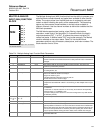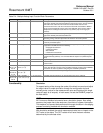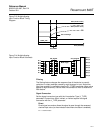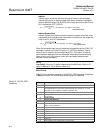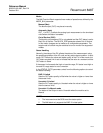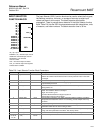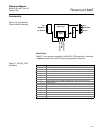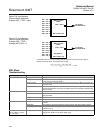
Reference Manual
00809-0100-4697, Rev EA
October 2011
D-19
Rosemount 848T
Block Execution
The ISEL function block reads the values and status of up to eight inputs. To
specify which of the six available methods (algorithms) is used to select the
output, configure the selector type parameter (SELECT_TYPE) as follows:
• Max selects the maximum value of the inputs.
• Min selects the minimum value of the inputs.
• Avg calculates the average value of the inputs.
• Mid calculates the update for eight sensors.
• 1st Good selects the first available good input.
If the DISABLE_N is active, the associated input is not used in the
selection algorithm.
If an input is not connected, it is also not used in the algorithm.
If the OP_SELECT is set to a value between 1 and 8, the selection type logic
is overridden and the output value and status is set to the value and status of
the input selected by OP_SELECT.
SELECTED will have the number of selected input unless the SELECT_TYPE
is mid, in which case it will take the average of the two middle values. Then
SELECTED will be set to “0” if there is an even number of inputs.
Status Handling
In Auto mode, OUT reflects the value and status quality of the selected input.
If the number of inputs with Good status is less than MIN_GOOD, the output
status will be Bad.
In Man mode, the OUT status high and low limits are set to indicate that the
value is a constant and the OUT status is always Good.
In the STATUS_OPTS parameter, select from the following options to control
the status handling:
Use Uncertain as Good
Sets the OUT status quality to Good when the selected input status is
Uncertain.
Uncertain if in Manual mode
The status of the Output is set to Uncertain when the mode is set to
manual.
NOTE
The instrument must be to OOS to set the status option.
Application Information
Use the ISEL function block to:
• Select the maximum temperature input from eight inputs and send it to
another function block (see Figure D-6)
• Calculate the average temperature of the eight inputs (see Figure D-7)
• Use only six of the eight inputs to calculate the average temperature.



